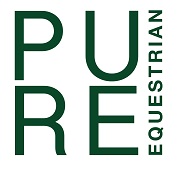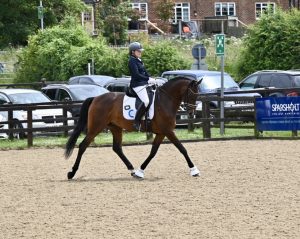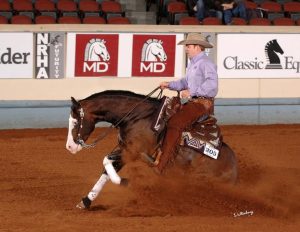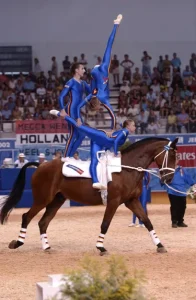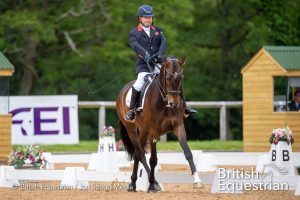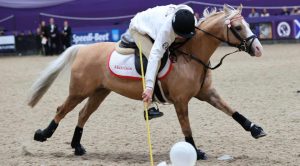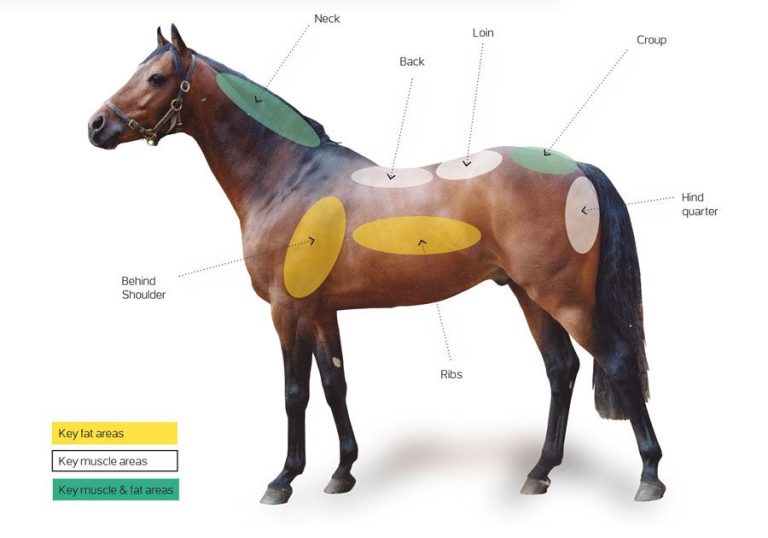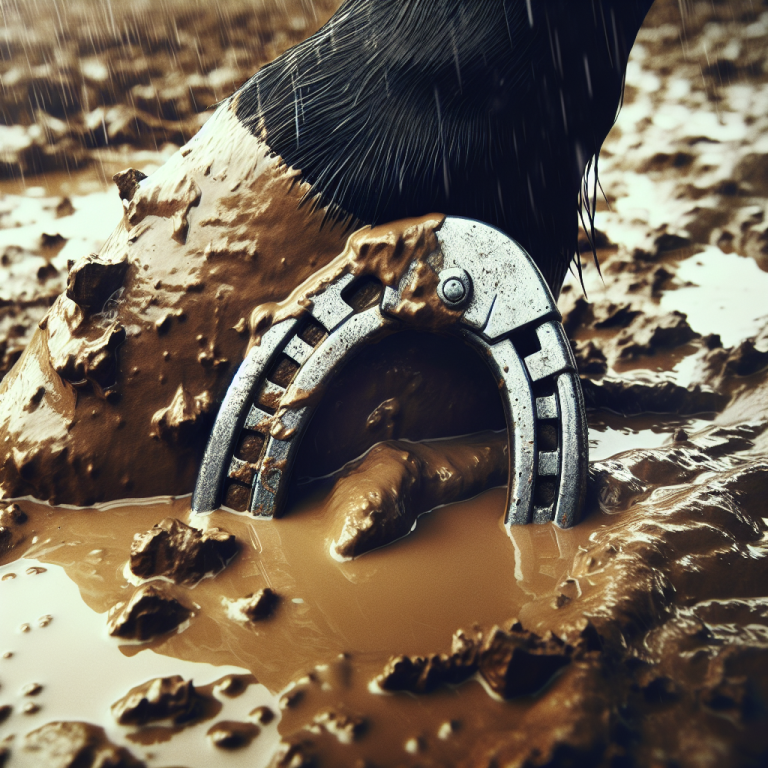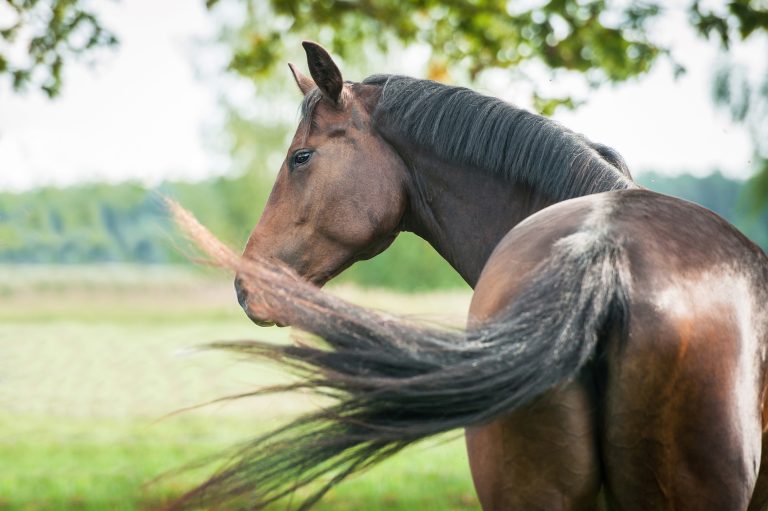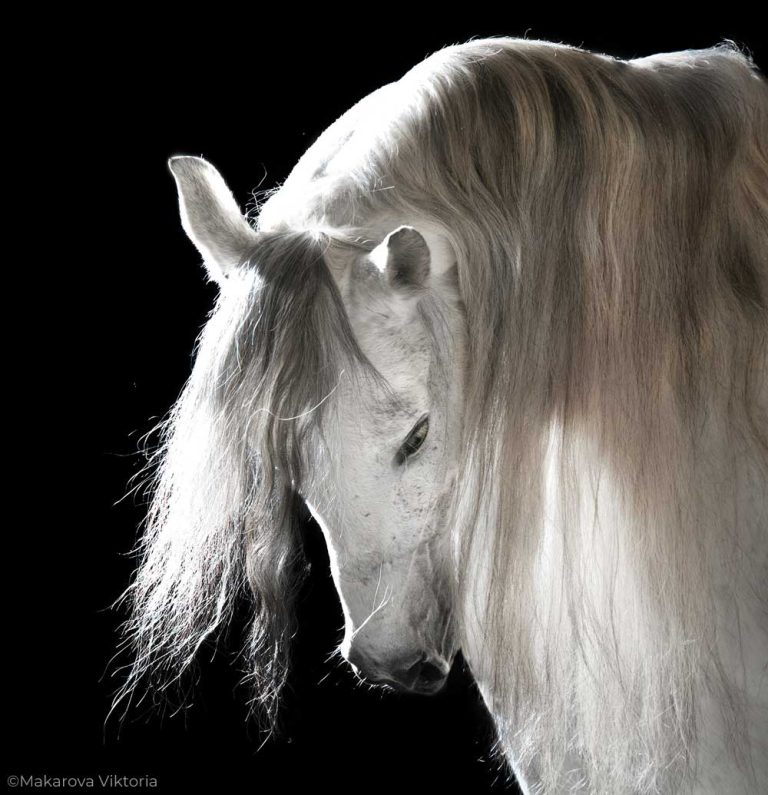Equestrian sports offer a world of excitement and competitive spirit, encompassing a wide range of disciplines that showcase the harmony between horse and rider. Whether you are a seasoned rider or simply curious about the fascinating world of equestrian sports, it is essential to understand the main disciplines that make up this thrilling realm. From the elegance of dressage to the adrenaline-fueled thrill of show jumping and the precision of eventing, each discipline presents its own unique challenges and requires a combination of skill, finesse, and a profound connection between horse and rider.
Table of Contents
ToggleJumping
Overview of Jumping
Jumping, also known as show jumping, is a thrilling discipline that tests the horse and rider’s ability to navigate a series of obstacles. The objective is to complete the course with the fewest penalties in the fastest time possible in some classes. It requires a combination of precision, agility, and speed. Jumping courses typically consist of a variety of fences, including verticals, oxers, and combinations. The height and complexity of the jumps increase as riders progress through different levels of competition.
Rules and Regulations
Jumping competitions are governed by the Federation Equestre Internationale (FEI), which sets the rules and regulations for the sport at the international level. The rules dictate the technical specifications of the jumps, the number of obstacles on the course, and the penalties incurred for faults such as knocking down a rail or refusing a jump. Riders are also subject to time penalties if they exceed the maximum time allowed to complete the course.
Training and Techniques
Training for jumping involves a combination of flatwork, gymnastics, and course work. It is important to develop a strong and supple horse that is responsive to the rider’s aids. Riders focus on developing a secure and balanced position in the saddle, allowing them to effectively communicate with their horse and navigate the course safely. Techniques such as adjusting stride length, maintaining rhythm, and executing accurate turns are crucial for success in jumping.
Equipment and Gear
The equipment and gear used in jumping are designed to provide safety and comfort for both the horse and rider. A well-fitted saddle and bridle are essential, along with appropriate protective boots for the horse’s legs. Riders typically wear an approved helmet, tall boots or jodhpur boots, and breeches. In addition, riders may choose to wear a body protector for added safety.
Common Challenges and Strategies
Jumping presents its share of challenges, including technical courses, tricky combinations, and the need for split-second decision making. Riders must be able to quickly assess the best line to take, adjust their horse’s stride, and make accurate turns. Developing a strong partnership with the horse and maintaining clear communication is vital to facing these challenges. Proper training, consistent practice, and a positive mindset are key strategies for success in jumping.
Notable Jumping Competitions
There are numerous prestigious jumping competitions held around the world that attract top riders and horses. Some notable events include the Rolex Grand Slam of Show Jumping, the Longines Global Champions Tour, and the FEI World Cup Jumping Final. These competitions showcase the highest level of skill and talent in the sport, providing an exhilarating experience for both competitors and spectators.
Dressage
Overview of Dressage
Dressage, often described as the art of horse training, is a discipline that emphasises the harmony between horse and rider. It showcases the horse’s natural beauty and grace through a series of precise and controlled movements. Dressage is often referred to as “horse ballet” due to its aesthetic qualities and the intricate communication between horse and rider.
Goals and Objectives
The goal of dressage is to develop a horse’s natural abilities and improve their balance, suppleness, and obedience. Riders aim to create an impression of harmony and unity with their horse, seamlessly guiding them through a series of movements. The objectivity of dressage lies in executing precise transitions, maintaining an even and rhythmic tempo, and showcasing the horse’s athleticism.
Dressage Movements and Tests
Dressage movements range from simple circles and transitions to more advanced manoeuvres such as flying changes, piaffe, and passage. These movements are combined into prescribed tests that vary in difficulty based on the level of competition. Tests are evaluated by a judge who assesses the horse’s quality of movement, the rider’s effectiveness, and the overall harmony between horse and rider.
Scoring and Judging
Dressage tests are scored on a scale from 0 to 10, with 10 being the highest score. The judge evaluates each movement and assigns a score based on its execution. Factors such as correctness, suppleness, impulsion, and submission are taken into consideration. In addition to the numerical score, judges also provide comments and feedback to help riders improve their performance.
Training and Dressage Levels
Training for dressage begins with the basics of developing a supple and obedient horse. Groundwork, flatwork, and schooling exercises are essential components of dressage training. As horses progress through the levels, the complexity and technicality of the movements increase. There are several levels of dressage, from introductory levels for beginners to the highest level known as Grand Prix, which showcases the most advanced movements.
Famous Dressage Horses
The world of dressage has seen many legendary horses who have made their mark in the sport. Horses such as Valegro, Totilas, and Isabell Werth’s Weihegold have achieved great success, capturing the hearts of dressage enthusiasts around the world. These horses are known for their exceptional movement, athleticism, and partnership with their riders.
Eventing
Overview of Eventing
Eventing is often referred to as the ultimate test of horse and rider. It combines three distinct phases – dressage, cross country, and show jumping – to evaluate the versatility, agility, and endurance of the horse and the skill and horsemanship of the rider. Eventing requires a combination of precision, bravery, and adaptability, making it one of the most challenging and exciting equestrian disciplines.
Dressage Phase
The dressage phase in eventing is similar to traditional dressage, focusing on the horse and rider’s ability to perform a series of precise movements in a controlled and obedient manner. The dressage test is designed to showcase the horse’s suppleness, obedience, and balance, and allows the horse and rider to establish a strong foundation for the rest of the competition.
Cross Country Phase
The cross country phase is the most thrilling and physically demanding phase of eventing. Riders and horses must navigate a challenging course that includes natural obstacles such as ditches, water complexes, and solid jumps. This phase tests the horse’s endurance, bravery, and agility, as well as the rider’s ability to make quick decisions and ride effectively over varied terrain.
Show Jumping Phase
The show jumping phase is the final phase of eventing and tests the horse and rider’s ability to jump a series of obstacles with precision and accuracy. The course consists of a fixed number of jumps set at a specific height and requires the horse to be nimble and responsive. This phase evaluates the horse’s athleticism and the rider’s ability to maintain control and execute accurate turns.
Equipment and Safety Measures
Eventing requires specific equipment and safety measures to ensure the well-being of both horse and rider. Riders typically wear a helmet, body protector, and cross country vest for added protection during the cross country phase. Horses are outfitted with appropriate protective boots and may wear a breastplate and a martingale for added safety. Courses are designed with safety in mind, and obstacles are built to be forgiving and collapsible to minimise the risk of injury.
Eventing Competitions
Eventing competitions range from local events to international championships. The pinnacle of eventing is the Olympic Games, where riders from around the world compete for gold. Other prestigious events include the Badminton Horse Trials, the Burghley Horse Trials, and the Rolex Kentucky Three-Day Event. These competitions attract top riders and horses and provide an incredible spectacle for enthusiasts of eventing.
Endurance Riding
Overview of Endurance Riding
Endurance riding is a discipline that tests the stamina and endurance of the horse and rider over long distances. The sport originated from the need to evaluate the qualities of a horse for long-distance travel. It emphasises the welfare of the horse, the rider’s horsemanship skills, and the ability to navigate challenging terrain.
Long Distance Riding
Endurance rides are typically held over distances ranging from 50 to 100 miles or more, and riders must complete the course within a specific time frame. The routes often encompass rugged and varied terrain, including mountains, deserts, and forests. Riders are required to navigate using maps and GPS devices, further adding to the challenge.
The Role of Horsemanship
Horsemanship plays a crucial role in endurance riding. Riders must have a deep understanding of their horse’s needs and be able to monitor their well-being throughout the ride. This includes managing the horse’s hydration, nutrition, and overall fitness. Excellent horsemanship skills are necessary to address any issues or injuries that may arise during the ride, ensuring the horse’s welfare remains the top priority.
Endurance Race Distances
Endurance rides are divided into several categories based on distance, including introductory rides (25 to 35 miles), limited distance rides (50 to 75 miles), and the ultimate test of the sport, the 100-mile ride. These rides are often split into multiple loops, allowing riders to rest and care for their horse in between.
Training and Conditioning
Training for endurance riding involves a gradual process of conditioning the horse’s cardiovascular system, muscles, and joints to withstand the demands of long-distance riding. Riders focus on building the horse’s endurance through a combination of long slow distance rides, interval training, and hill work. Proper nutrition, hydration, and veterinary care are paramount to ensure the horse is in optimal condition for competition.
Notable Endurance Races
Endurance riding has its fair share of prestigious races that are renowned for their challenging courses and beautiful landscapes. The Tevis Cup, held annually in California’s Sierra Nevada mountains, is one of the most famous endurance rides in the world. Other notable races include the Sheikh Mohammed bin Rashid Al Maktoum Endurance Cup in Dubai and the Mongol Derby, a multi-day race across the Mongolian steppe.
Reining
Overview of Reining
Reining is a western riding discipline that showcases the horse’s athleticism and agility. It is often referred to as the western version of dressage, combining precise manoeuvres, smooth transitions, and individuality of style. Reining is characterised by its fast-paced and exciting patterns, making it a favourite among western riding enthusiasts.
Patterns and Manoeuvres
Reining patterns consist of a series of predetermined manoeuvres that are performed in a specific order. Manoeuvres may include spins, sliding stops, rollbacks, circles, and lead changes. These movements require a high level of collection and control, showcasing the horse’s ability to perform precise and quick transitions.
Scoring and Judging
Reining patterns are scored on a scale from 0 to infinity, with each manoeuvre receiving its own score. Judges evaluate factors such as correctness, attitude, smoothness, and finesse. Each manoeuvre is assigned a value, and penalties are deducted for mistakes or deviations from the prescribed pattern. The horse and rider with the highest score are declared the winners.
Equipment and Attire
Reining horses are typically fitted with Western-style tack, including a decorated saddle, a bridle with a curb bit, and protective boots for the horse’s legs. Riders often wear Western-style attire, including a cowboy hat, long-sleeved shirt, chaps, and Western boots. The attire reflects the traditional heritage of the discipline and adds to the overall aesthetic of reining.
Reining Competitions
Reining competitions encompass a range of events, from local shows to international championships. The National Reining Horse Association (NRHA) is the governing body for the sport at the international level and organizes major events such as the NRHA Futurity and NRHA Derby. Reining is also included in major events like the World Equestrian Games, where riders from different countries compete for top honors.
Famous Reining Horses
Reining has seen its fair share of exceptional horses who have left their mark in the sport. Horses such as Gunner, Smart Chic Olena, and Wimpy’s Little Step have achieved fame and success in the reining world. These horses are known for their athleticism, trainability, and ability to execute precise manoeuvres with style and finesse.
Vaulting
Overview of Vaulting
Vaulting is a unique discipline that combines gymnastics and dance on horseback. It requires a team of athletes working in harmony with their horse to perform a variety of movements, including acrobatics, dance routines, and individual freestyle performances. Vaulting showcases the dynamic relationship between horse and vaulter, resulting in captivating and awe-inspiring performances.
History and Origins
Vaulting has its roots in ancient times when horses were used as a means of transportation and war. The discipline gained popularity in the 20th century and has evolved into a highly technical and artistic sport. It was initially developed as a way for riders to improve their balance and suppleness, but has since become a discipline in its own right.
Vaulting Movements and Routines
Vaulting movements range from basic exercises such as kneeling and standing on the horse’s back to more complex manoeuvres such as handstands, flips, and intricate dance routines. Vaulting is performed in teams or as an individual, with athletes showcasing their strength, flexibility, and coordination. The movements are choreographed to music, adding an artistic element to the performance.
Evaluating Performance
Vaulting performances are evaluated by a panel of judges who assess various aspects, including technique, difficulty, artistic impression, and harmony between the horse and vaulter. Judges assign scores based on the execution of movements, the quality of the horse’s gaits, and the overall presentation. The horse’s movement, stability, and adaptability are also taken into consideration when evaluating performances.
Vaulting Equipment
Vaulting equipment includes a padded surcingle or roller, a vaulting pad or mattress, and a set of vaulting handles or side reins attached to the surcingle. These items provide stability and security for the vaulter during various movements. Vaulters typically wear comfortable and form-fitting clothing, such as leotards or gymnastics attire, to allow for freedom of movement.
Notable Vaulting Events
Vaulting competitions take place at national and international levels, with athletes showcasing their skills and creativity in different categories. The FEI World Equestrian Games feature vaulting as one of the disciplines, providing a platform for the world’s top vaulters to compete. Other notable events include the European Vaulting Championships and the CVI Pacific Cup, which bring together vaulters from around the world.
Polo
Overview of Polo
Polo is a fast-paced team sport that originated in ancient Persia and has since gained popularity around the world. It involves two teams of four players on horseback who aim to score goals by hitting a small ball with a long-handled mallet. Polo is known for its thrilling action, strategic gameplay, and the skillful horsemanship required to excel in the sport.
Rules and Gameplay
Polo matches are divided into periods known as chukkas, with each chukka lasting approximately seven minutes. The objective is to score goals by hitting the ball between the opposing team’s goal posts. Players must ride their horses at full speed, manoeuvreing to intercept the ball and outmanoeuvre their opponents. Teamwork and communication are key in polo, with players coordinating their movements and strategies to gain an advantage.
Polo Positions and Tactics
Each player in polo has a specific position and role on the team. The positions include the number-one player, who is typically the most offensive and responsible for scoring goals, the number-two player, who focuses on both offense and defense, the number-three player, who acts as the tactician and sets up plays, and the number-four player, who is the most defensive and often tasked with defending the goal. Players must have a strong understanding of the game and be able to adapt their tactics according to the flow of play.
Equipment and Gear
Polo requires specific equipment and gear to ensure the safety and comfort of both horse and rider. Players use a long-handled mallet made of bamboo or a composite material to hit the ball. Horses are outfitted with protective leg wraps or boots, and may also wear a breastplate and martingale for added safety. Riders typically wear a polo helmet, knee guards, and gloves, along with comfortable, lightweight clothing.
Polo Tournaments and Championships
Polo tournaments and championships are held at various levels, ranging from local club matches to high-goal international competitions. The most prestigious polo tournament is the British Open Polo Championship, held annually at Cowdray Park in England. Other notable events include the Argentine Open, the U.S. Open Polo Championship, and the Queen’s Cup. These tournaments attract top players and teams from around the world, showcasing the highest level of skill and horsemanship in the sport.
Famous Polo Players
Polo has seen many legendary players who have left a lasting impact on the sport. Players such as Adolfo Cambiaso, Facundo Pieres, and Nacho Figueras are revered for their exceptional talent, skill, and sportsmanship. They have become global ambassadors for the sport, introducing polo to a wider audience and inspiring the next generation of players.
Driving
Overview of Driving
Driving is a discipline that showcases the horse’s ability to pull a carriage or wagon and the driver’s skill in manoeuvreing their equine partner. It combines athleticism, precision, and harmony between horse and driver. From the elegance of the dressage phase to the thrilling speed of the marathon phase, driving encompasses a variety of skills and challenges.
Types of Driving
There are several types of driving, including carriage driving, combined driving, and pleasure driving. Carriage driving focuses on the elegance and precision of the horse’s movements, with specific emphasis on dressage. Combined driving combines the three phases of dressage, marathon, and cones, similar to eventing but without the riding component. Pleasure driving is a more relaxed and recreational form of driving, often seen at fairs and festivals.
Driving Techniques
Driving requires a unique set of skills and techniques for both horse and driver. The driver must have a thorough understanding of rein aids, whip aids, and voice commands to effectively communicate with the horse. Proper use of weight and balance is essential to manoeuvre the carriage or wagon, especially during tight turns and intricate movements. Horses must be trained to respond to subtle cues and maintain a steady pace throughout the course.
Equipment and Harnessing
Driving harnesses consist of a variety of components, including a collar or breastplate, hames, traces, and a driving bit. The harness must fit properly and be correctly adjusted to ensure the horse’s comfort and safety during driving. The carriage or wagon is fitted with appropriate braking and steering mechanisms, and may also include suspension and other features for added comfort.
Driving Events and Competitions
Driving events and competitions vary in format and level of difficulty. Pleasure driving events focus on showcasing the horse’s manners and appearance, with a strong emphasis on presentation and adherence to tradition. Combined driving competitions test the horse and driver’s skills in dressage, marathon, and cones. Major driving competitions include the FEI World Driving Championships and the Royal Windsor Horse Show, attracting top drivers and horses from around the world.
Famous Driving Horses
Throughout history, there have been many notable driving horses who have made their mark in the sport. Horses such as Gigolo, Sir Lancelot, and Nelson have achieved great success, demonstrating exceptional athleticism, elegance, and trainability. These horses have become legendary figures in the driving world, inspiring future generations of drivers.
Para-Equestrian
Overview of Para-Equestrian
Para-equestrian, also known as para-dressage and para-jumping, is a discipline that allows riders with physical disabilities to compete in equestrian sports. The sport provides opportunities for individuals with impairments to showcase their skills, determination, and horsemanship. Para-equestrian competitions are held at various levels, including national and international championships.
Classification System
Para-equestrian uses a classification system that groups riders based on their disability and functional ability. Riders are assessed by classifiers who evaluate their impairments and how they impact their ability to ride. Classes range from Grade I to Grade V, with Grade I being for riders with the most significant impairments and Grade V for riders with the least significant impairments. This classification system ensures fair competition by creating a level playing field for all participants.
Adaptive Equipment and Modifications
Para-equestrian allows for the use of adaptive equipment and modifications to accommodate the specific needs of each rider. This can include the use of specialised saddles, reins, and stirrups, as well as modifications to the horse’s tack or equipment. These adaptations enable riders with disabilities to effectively communicate with their horse and safely navigate the course or jumps.
Para-Dressage
Para-dressage is the dressage component of para-equestrian, focusing on the harmony and precision of movements between horse and rider. The same principles of dressage apply, with riders performing prescribed tests that are evaluated based on the quality of movement, accuracy, and overall presentation. Para-dressage competitions allow riders with disabilities to excel in the discipline and compete on an international stage.
Para-Jumping
Para-jumping is the jumping component of para-equestrian, allowing riders with disabilities to participate in the thrill and excitement of jumping courses. Para-jumping competitions involve a variety of fences and obstacles that test the horse and rider’s ability to navigate them safely and accurately. Riders are evaluated based on their riding technique, control, and effectiveness in the jumping phase.
Notable Para-Equestrian Competitions
Para-equestrian competitions are held at various levels, providing riders with disabilities the opportunity to compete and excel in their chosen discipline. The Paralympic Games is the pinnacle of para-equestrian, showcasing the talent and dedication of riders from around the world. Other notable events include the FEI World Para-Dressage Championships and the National Para-Equestrian Championships. These competitions raise awareness and promote inclusivity in equestrian sports.
Mounted Games
Overview of Mounted Games
Mounted games is a fast and exhilarating discipline that combines speed, precision, and teamwork. It originated in the United Kingdom and has since gained popularity around the world. Mounted games involve a variety of races and team challenges that test the horse and rider’s agility, communication, and bond.
Origins and History
Mounted games originated from traditional gymkhana events in the United Kingdom, where riders would compete in various games and races on horseback. In the 1950s, the sport evolved into its current form, with standardised rules and equipment. Mounted games entered the international arena in the 1960s, and today, it is a recognised discipline that attracts riders of all ages and levels of experience.
Games and Race Formats
Mounted games encompass a wide variety of races and games that require speed, accuracy, and teamwork. Popular games include flag race, where riders collect flags from barrels and return them to a central point, and bending race, where riders weave through a series of poles in a serpentine pattern. Other games include mug shuffle, sack race, and the thrilling relay race, where teams compete in a relay format to complete a course in the shortest time possible.
Skills and Training
Mounted games require riders to master a range of skills, including balance, speed, accuracy, and effective communication with their horse. Riders must be able to mount and dismount quickly, navigate tight turns, and maintain control at high speeds. Training focuses on building confidence, establishing clear communication with the horse, and improving agility.
Competitions and Championships
Mounted games competitions are held at various levels, from local shows and regional competitions to national and international championships. The International Mounted Games Association (IMGA) organizes major events such as the World Team Championships, where teams from different countries compete for top honors. Other notable events include the Royal Windsor Horse Show and the Pony Club Championships. These competitions showcase the excitement and skill of mounted games and provide an opportunity for riders to compete at a high level.
Famous Mounted Games Teams
Mounted games has its fair share of legendary teams who have achieved great success and captured the hearts of spectators. Teams such as Wales, England, and Scotland have consistently performed well and dominated the sport at the international level. These teams showcase the highest level of teamwork, coordination, and horsemanship, inspiring future generations of mounted games enthusiasts.
In conclusion, equestrian sports offer a wide range of disciplines, each with its own unique challenges and rewards. Whether you are drawn to the precision and elegance of dressage, the excitement and speed of jumping, or the teamwork and coordination of mounted games, there is a discipline that suits your interests and abilities. These disciplines require dedication, skill, and a strong bond between horse and rider. So, saddle up and embark on a journey into the world of equestrian sports – where the possibilities are endless and the joy of horsemanship knows no bounds.
